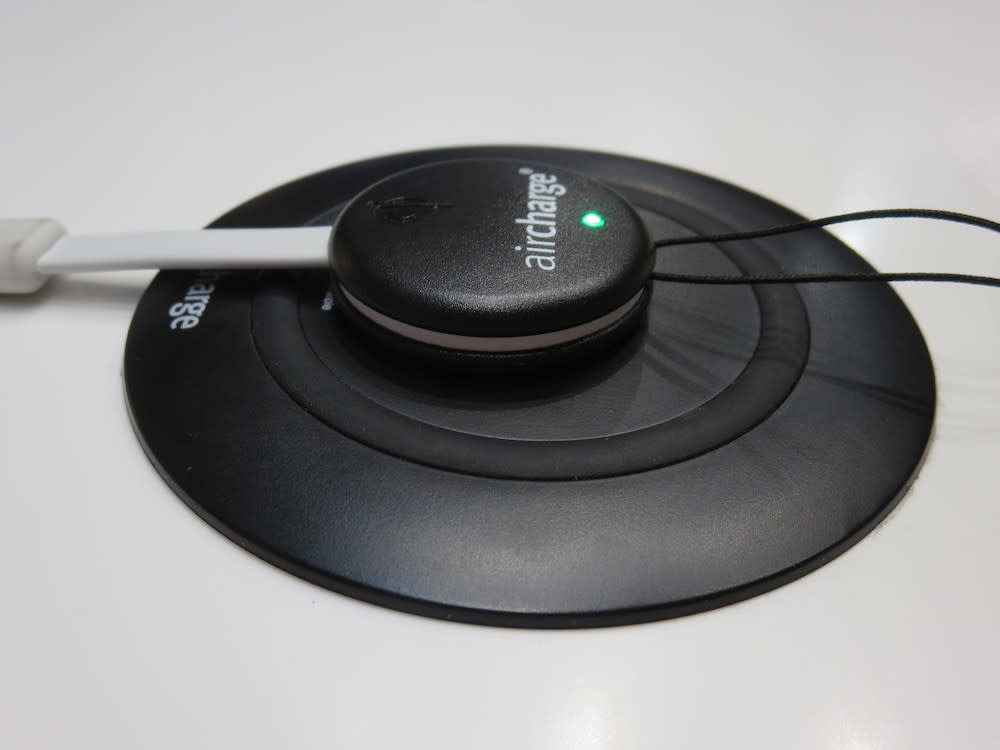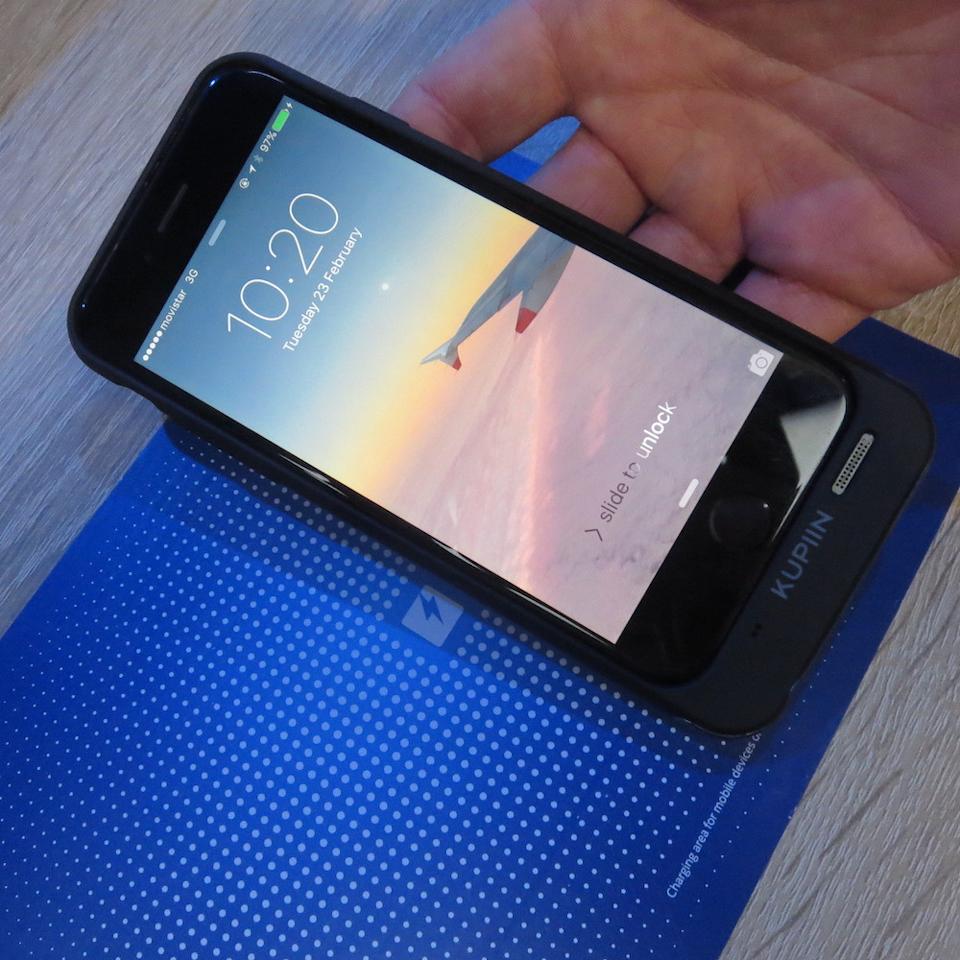Why Wireless Charging Is Still a Tangled Mess

(Images by Rob Pegoraro)
BARCELONA — At last year’s Mobile World Congress, just one of the high-profile phones debuting at the show supported wireless charging. It was accompanied by many, many other new phones that completely ignored the technology.
The same thing happened at this year’s MWC.
That’s the problem with wireless charging: Year after year, it makes less progress than you might expect of something that addresses such a fundamental issue and that actually works.
It ought to be simple: Just as (until the recent advent of USB-C) non-Apple smartphones settled on micro-USB cables for charging, there ought to be a single standard technology for transferring power from a charging surface to a phone, smartwatch or other mobile gadget. Instead, wireless charging has been fragmented between competing would-be standards for more than five years.
Qi versus Airfuel
The wireless-charging standard you’re most likely to find supported in a smartphone is the Wireless Power Consortium’s Qi (pronounced “chee”). It has shown up in a handful or two of U.S.-market phones over the past few years.
One tricky thing with Qi is its picky positioning: A phone has to sit on the right spot on a charging surface for electricity to transfer. Another is finding one of those charging surfaces: Since I acquired a Qi-enabled Nexus 4 more than two years ago, my only sustained use of that feature came when I stayed at an Airbnb with a Qi charging pad on the nightstand.
(I gave the host a five-star rating in part for that thoughtfully geeky gesture.)
At this year’s MWC, of all the major new smartphones at the show, only Samsung’s Galaxy S7 and S7 Edge feature support for Qi. But they also support wireless charging on Powermat surfaces.
That brings us to the Pepsi to Qi’s Coke, the Airbus to its Boeing: Powermat was actually the first wireless charging technology to hit the market. It failed to land support from the big phone brands. But after some back-and-forth, it got folded into a competing standard that was known for a while as “Rezence” and now goes by AirFuel.
AirFuel also has yet to show up in phones, but it does offer some theoretical advantages over Qi: It can charge devices from a couple of inches away, allowing you (for example) to attach a charging surface to the underside of a desk and still be able to recharge devices left on top with needing to position them just so.
AirFuel can also deliver more power, enough to recharge a laptop, although it has yet to match Qi’s better-than-75-percent efficiency. Intel, an AirFuel backer, expects the first AirFuel-compatible laptops to ship later this year.
(To find out more about how they work, you can read about Qi’s inductive charging and AirFuel’s resonant charging.)

All your installed base
You could argue about the relative merits of these two approaches until the electrons come home. But what’s more important is your ability to find a charging surface that’s compatible with your device. On that score, Qi comes out ahead of AirFuel.
You may not find a Qi surface at your next Airbnb, but your odds of seeing one in a Marriott lobby are pretty good. Your next car may include Qi charging, too. Some McDonalds restaurants in the U.K. now offer them; the Wireless Power Consortium’s booth at MWC features a Qi-enabled table from one.
AirFuel advocates say their technology is easier to install in facilities, since it doesn’t require carving cavities into tables or desks.
“They did the entire store in a three- or four-hour installation,” said Kirk Skaugen, a senior vice president at Intel, of noodle shops in Shenzhen, China that installed AirFuel surfaces in a test.
But being first can mean a lot, and for now AirFuel surfaces are confined to a far smaller set of locations than Qi.
“Everything now is going to have to be somehow backward compatible with Qi,” said Laurence McGarry, a product marketing director for Integrated Device Technology. That San Jose, Calif., firm has shipped 70 million Qi chipsets but is also an AirFuel board member.
If an immensely popular phone adopted one standard or the other, that might tip the market in that direction. But so far Apple has stayed aloof.
You may not want Apple to settle this anyway. The company adopted Qi for the Apple Watch but tweaked it enough to require Watch owners to buy its own charger. And if current rumors pan out, Apple may opt for a longer-distance wireless charging system — and charging over the air is slow, inefficient and incompatible with all existing hardware.
There should be only one
This standards squabble has to end at some point, but nobody seems to know how to make that happen.
Some companies can make money by supporting both. “We think the agnostic approach is the best way for us,” said Dan Bladen, CEO of Chargifi, a London firm that provides software to help businesses manage wireless-charging stations.
But building both standards into phones adds complexity and bulk, thanks to the need to add a separate charging coil for each technology. Phone designers tend to hate that sort of compromise — Google’s engineers, for example, dropped Qi support to make the Nexus 5X and 6P slightly thinner than their Qi-enabled predecessors.
“We need one solution,” observed Intel’s Skaugen. But that solution may wind up being USB-C cables that you can plug into any outlet in the world.
Email Rob at rob@robpegoraro.com; follow him on Twitter at @robpegoraro.

